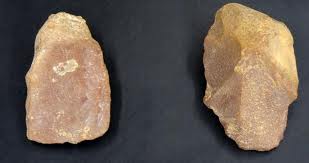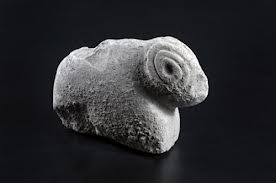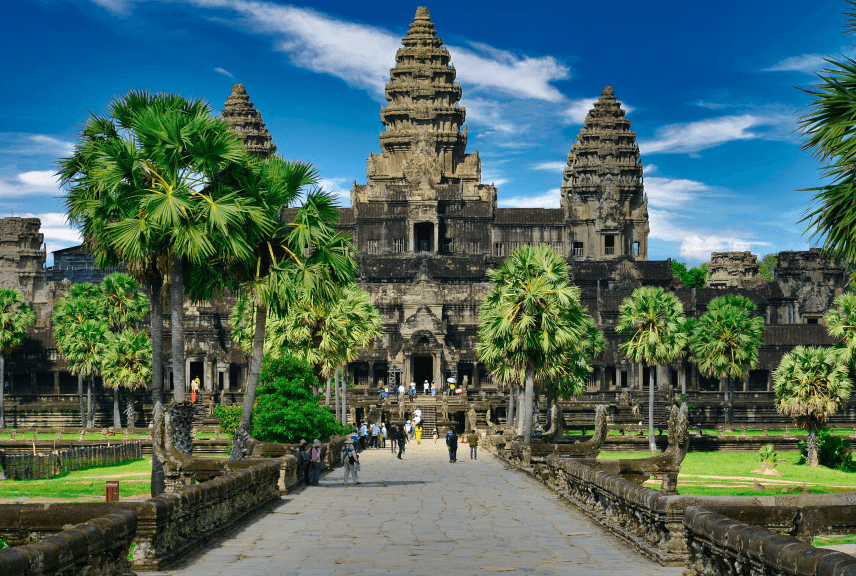Country’s official name
At the beginning of the Bronze Age, the Viet tribe groups had settled down in the North and in the north of Central Vietnam. There were about 15 groups of Lac Viet tribesmen living mainly in the northern highland and delta and a dozen Au Viet groups of tribesmen living in Viet Bac, the northern region of old Vietnam.
♦ Van Lang (2876 BC – 258 BC)
At that time, the two ethnic tribes of the Lac Viet and Au Viet lived together in many areas with other inhabitants. Due to the increasing need to control floods, fight against invaders, and exchange culture and economy, these tribes living near each other tended to gather together and integrate into a larger mixed group. Among these Lac Viet tribes was the Van Lang, which was the most powerful tribe. The leader of this tribe joined all the Lac Viet tribes together to found Van Lang Nation, addressing himself as King Hung. The next generations followed in their father’s footsteps and kept this appellation. Based on historical documents, researchers correlatively delineated the location of Van Lang Nation to the present day regions of North and north of Central Vietnam, as well as the south of present-day Kwangsi (China). The Van Lang Nation approximately lasted from the beginning of the first millennium B.C. to the 3rd century B.C.
In 221 BC, Qin Shihuangdi (Tan Thuy Hoang), King of Qin (China), invaded the land of the Viet tribes. Thuc Phan, the leader of the alliance of Au-Viet tribes was respected as the chief of the resistance war against the Tan enemy that later, in 208 BC, was forced to withdraw. With his imposing power, Thuc Phan nominated himself as King An Duong Vuong and founded Au Lac Nation with groups of Lac Viet and Au Viet tribes. In 207 BC, Trieu Da, King of Nam Viet (China), invaded Au Lac country. The resistance of An Duong Vuong failed soon after this invasion. As a result, the northern feudalist took turns dominating the country over the next seven centuries, establishing their harsh regime in the country and dividing the country into administrative regions and districts with unfamiliar names. However, the country’s name of Au Lac could not be erased from the people’s minds in their everyday life.

In the spring of 542, Ly Bi rose up in arms and swept away the Chinese administration, liberating the territory. He declared himself King of Van Xuan Kingdom in February 544, acknowledging the national superiority complex of the independent spirits to live in eternal peace. However, the existence of Ly Bi’s administration was very brief. He was defeated by the Chinese imperial army, and the country returned to feudal Chinese domination again in 602. The name Van Xuan was restored only after the victory over the Han army at the Bach Dang River led by General Ngo Quyen in 938. This victory marked the end of the Chinese domination period in Vietnam.
In 968, Dinh Bo Linh defeated the twelve lords and unified the country. He declared himself King and named the country Dai Co Viet. This name remained throughout the Dinh Dynasty (968-980), Pre-Le Dynasty (980-1009) and the beginning of Ly Dynasty (1010-1225).
In 1054, a flaming bright star appeared in the sky for many days, which was considered a good omen. As a result, the King Ly changed the name of the country to Dai Viet. This name remained until the end of Tran Dynasty (1126 – 1400). The name Dai Viet remained under the Le Dynasty (1428-1788) and the Tay Son Dynasty (1788-1802).
In March 1400, Ho Quy Ly usurped the throne of King Tran Thieu De, founded the Ho Dynasty and changed the country’s name to Dai Ngu, meaning peace in the ancient language. This name only lasted for very short time, until April 1407, when the Ming enemy invaded Dai Ngu and defeated the Ho Dynasty (1400- 1407).
 In 1802, Nguyen Anh claimed his coronation to become the first King Nguyen, starting the Nguyen dynasty and changing the country’s name to Viet Nam. This name was officially recognized in many diplomatic missions in 1804. However, the words “Viet Nam” had already appeared very early in history. In the 14th century, there was a book of code entitled “Viet Nam the Chi”, edited by Doctor Ho Tong Thoc. In the book by scholar Nguyen Trai entitled “Du Dia Chi” at the beginning of 15th century; the words “Viet Nam” were repeated several times. Doctor Trinh Nguyen Binh Khiem (1491-1585) had written on the first page of his work “Trinh Tien Sinh Quoc Ngu” the following: “… Viet Nam have constructed its foundation…” The words “Viet Nam” were also found in some carved stelae of the 16th – 17th century in Bao Lam Pagoda, Haiphong (1558), in Cam Lo Pagoda, Ha Tay (1590), in Phuc Thanh Pagoda, Bac Ninh (1664), etc. In particular, in the first sentence on the stele Thuy Mon Dinh (1670) at the landmark on the border at Lang Son, it was written: “This is the gateway of Viet Nam that guards the northern frontiers…” In terms of meaning, there are many theories that prove the words “Viet Nam” are created by combining two racial and geographic elements, which is understood as “Viet people from the south”. During the reign of King Minh Mang (1820-1840), the name of the country was changed to Dai Nam, but Viet Nam was still widely used in many literary works, civil business affairs, and social relations. Following the triumph of the August Revolution on August 19th 1945, which had entirely swept away Vietnamese feudal and French colonial oppression and began a new era in the country, President Ho Chi Minh proclaimed the nation’s independence and the national name Democratic Republic of Vietnam was born on September 2nd 1945. Although Vietnam suffered from war and separation in the following 30 years, the sacred words “Viet Nam” were very popularly used from the North to the South, and were deeply imprinted in the hearts of the Vietnamese people. Following the liberation of Southern Vietnam on April 30 1975, the entire country of Vietnam was completely unified. In the first meeting of the National Assembly of the Unified Vietnam on July 2nd 1976, the assembly decided to name the country The Socialist Republic of Vietnam. The constitution of 1980, and 1992, continued its affirmation of the country’s official name, legally and actually.
In 1802, Nguyen Anh claimed his coronation to become the first King Nguyen, starting the Nguyen dynasty and changing the country’s name to Viet Nam. This name was officially recognized in many diplomatic missions in 1804. However, the words “Viet Nam” had already appeared very early in history. In the 14th century, there was a book of code entitled “Viet Nam the Chi”, edited by Doctor Ho Tong Thoc. In the book by scholar Nguyen Trai entitled “Du Dia Chi” at the beginning of 15th century; the words “Viet Nam” were repeated several times. Doctor Trinh Nguyen Binh Khiem (1491-1585) had written on the first page of his work “Trinh Tien Sinh Quoc Ngu” the following: “… Viet Nam have constructed its foundation…” The words “Viet Nam” were also found in some carved stelae of the 16th – 17th century in Bao Lam Pagoda, Haiphong (1558), in Cam Lo Pagoda, Ha Tay (1590), in Phuc Thanh Pagoda, Bac Ninh (1664), etc. In particular, in the first sentence on the stele Thuy Mon Dinh (1670) at the landmark on the border at Lang Son, it was written: “This is the gateway of Viet Nam that guards the northern frontiers…” In terms of meaning, there are many theories that prove the words “Viet Nam” are created by combining two racial and geographic elements, which is understood as “Viet people from the south”. During the reign of King Minh Mang (1820-1840), the name of the country was changed to Dai Nam, but Viet Nam was still widely used in many literary works, civil business affairs, and social relations. Following the triumph of the August Revolution on August 19th 1945, which had entirely swept away Vietnamese feudal and French colonial oppression and began a new era in the country, President Ho Chi Minh proclaimed the nation’s independence and the national name Democratic Republic of Vietnam was born on September 2nd 1945. Although Vietnam suffered from war and separation in the following 30 years, the sacred words “Viet Nam” were very popularly used from the North to the South, and were deeply imprinted in the hearts of the Vietnamese people. Following the liberation of Southern Vietnam on April 30 1975, the entire country of Vietnam was completely unified. In the first meeting of the National Assembly of the Unified Vietnam on July 2nd 1976, the assembly decided to name the country The Socialist Republic of Vietnam. The constitution of 1980, and 1992, continued its affirmation of the country’s official name, legally and actually.Human civilization started in Vietnam a very long time ago. In fact, archaeologists have found vestiges of Homo Erectus in the caves of Lang Son and Nghe An Provinces. During the Pre-Paleolithic Age, also known as the Son Vi Era (between 10,000 to 30,000 years ago), the population of Vietnam was rather large and widespread.
During this period, groups of people with different cultural attributes mixed together. The people used sophisticated trimmed stone axes, produced stone rings, and designed pottery goods. Foundation of the Nation
During the Dong Son period, only one state had formed. The unified culture prevailing in this region stretched from the Sino-Vietnamese border to the northern banks of the Gianh River. The nation of the ancient Viet people existed as the Van Lang Nation, which was ruled by the Kings Hung.
A few centuries later, An Duong Vuong founded the Au Lac Nation in the third century BC. Records of this nation can be found in the annals written by the Chinese historian, Xi Ma Tin. Remains of the Co Loa Citadel, which was built during the An Duong Vuong period, can still be seen today.
The Pre-Sa Huynh culture evolved in South Central Vietnam during the Iron Age. The people of this group lived between Thua Thien and the Dong Nai River Delta. At that time, people were buried in tombs which contained many tools made of iron and jewelry made of agate and jasper.. The Sa Huynh culture was founded by the ancestors of the Cham who founded the Champa Kingdom.







